Rivalries, backstabbing and lolly snakes, oh my! The wild and wacky world of snake catchers
Behind the industry that keeps slipping into our social feeds is “back stabbing” and dirty tactics – as well as hilarious call-outs for snakes that just aren’t snakes.
Pets and Wildlife
Don't miss out on the headlines from Pets and Wildlife. Followed categories will be added to My News.
Slashed tyres and fake call-outs in the middle of the night make Rolly Burrell reckon there are some cowboys in his industry who don’t just catch snakes – they act like them too.
The longtime Snake Catchers Adelaide boss says the level of competitiveness among catchers these days is “enough to drive you mad”.
Mr Burrell, who has been in the business for almost 50 years, is one of several snake-catching veterans who revealed to The Advertiser the underbelly of a fascinating industry, where the only thing weirder than the behaviour of some operators is that of their clients.
Mr Burrell said he had twice had his company vehicle’s tyres punctured or let down, which he believed to be the work of other catchers.
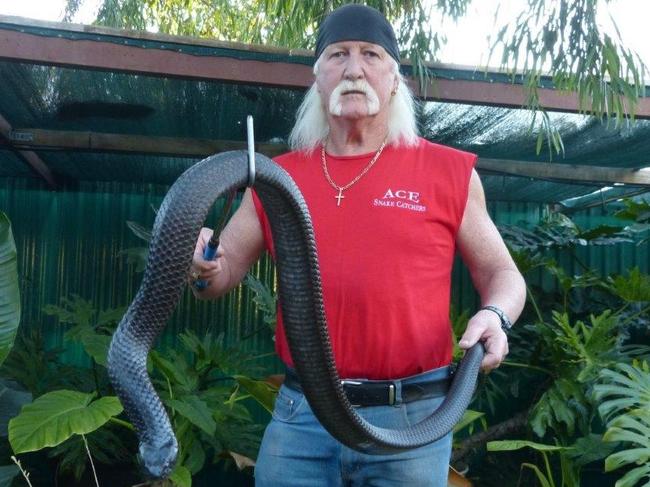
He’s also received jobs from blocked numbers that on multiple occasions have turned out to be fake call-outs to vacant blocks.
“There’s a lot of back stabbing,” he said. “It’s the tall poppy syndrome.”
The Advertiser is not suggesting other snake catchers who spoke to the paper have engaged in such behaviour.
Roger Atkinson, owner of Ace Snake Catchers for almost 30 years, agreed the industry had become highly competitive, mostly due to newcomers advertising their services online.
“When I started there were only three businesses going that had to do the whole metropolitan (Adelaide) area,” he said.
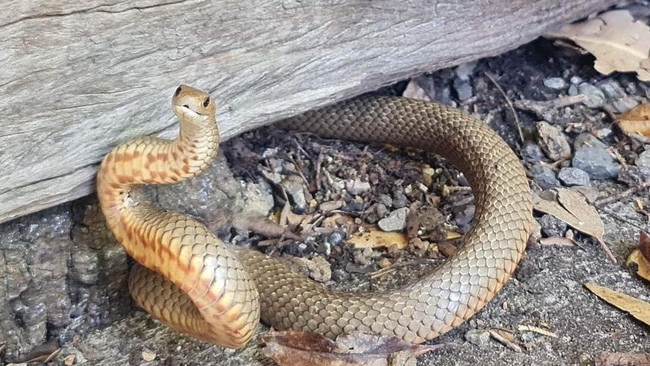
“All of a sudden, being a snake catcher is the flavour of the month.
“The biggest problem is they are 20 to 25 years old, but they (think they) know it all … and then they talk garbage.
“(They) talk themselves up saying ‘this snake does this’ and ‘this snake does that’, trying to blow their own trumpet. Their knowledge is very limited.”
The self-confessed Hulk Hogan lookalike, 72, discovered his love of snakes as a teenager and turned them into a career, his business covering northern Adelaide, the Hills and Barossa.
“It’s a dangerous job. It has its risks but you have to know what the risks are,” he said.
Mr Burrell, who works closely with his partner Ange Broadstock, said he often had calls from people frightened of items they believed were snakes.
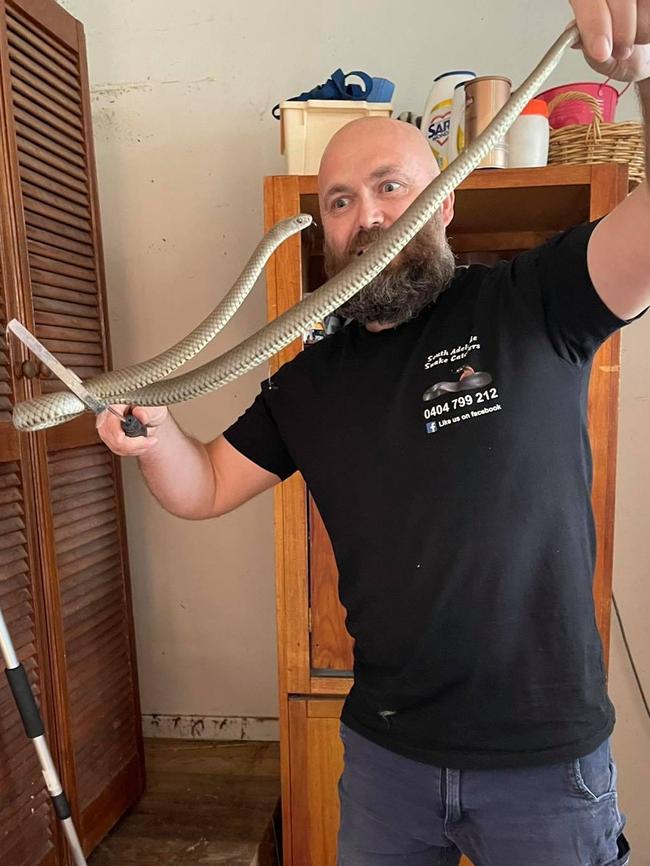
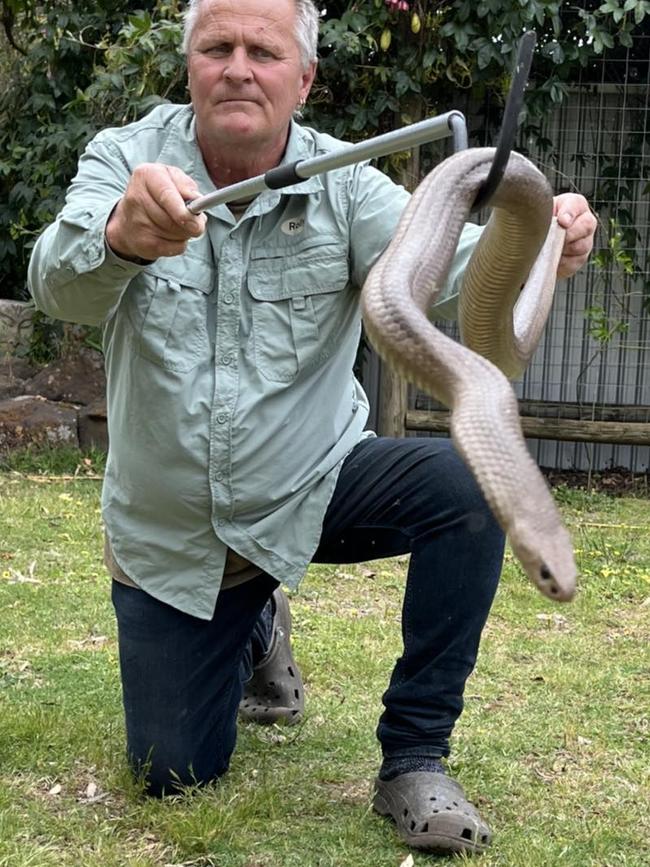
He recently received a photo from a woman claiming there was a snake in her loo.
“I had a look at it and I said to her ‘I think your family has got worms’,” he said.
Mr Burrell was once called out to a job only to find an Allen’s jelly snake on the floor in one room of a home and a man who had barricaded himself in a bedroom, supposedly to hide from it.
“He’d been eating them so surely he would’ve known,” Mr Burrell said.
Catchers also said they sometimes received calls from people they believed to be on drugs.
“We had one (this week) at five o’clock in the morning saying there was a snake moving across the road and he’d been sitting there watching it for two hours,” Mr Burrell said.
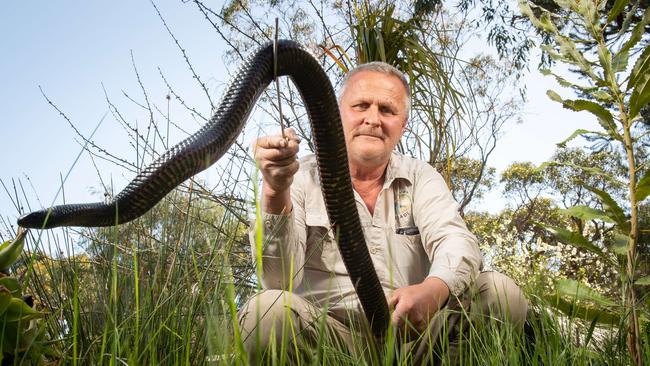
“He then rings back at nine o’clock and says ‘I’ll just let you know not to come now, it’s a plastic bag blowing down the road’.”
On another occasion, someone claimed a snake was wriggling under them on the couch while they watched television, he said.
Ms Broadstock said a woman once cut up a fake snake but still believed it was alive.
“She had it in a shoebox and she’d chopped it – she still didn’t believe it was rubber,” she said.
But there’s no shortage of call-outs to real snakes.
“A red-bellied black snake crawled into the back of a knapsack (at a school) and (a young kid) took it home,” Mr Burrell said.
“The mum saw it when she went and put her hand in there to get a lunch box. We’ve seen it all.”
Daniel McCulloch, owner of South Adelaide Snake Catchers, captures four to five snakes a day and says they can be found in the oddest of places.
He was once called to the same bathroom twice to catch a snake.
The second time he managed to find it hidden tightly between the wall and the toilet.
“The snake went back to his hiding place which was in the small gap the size of your pinky,” he said.
“It disappeared up there and I had to take the full tank off to get it out.”
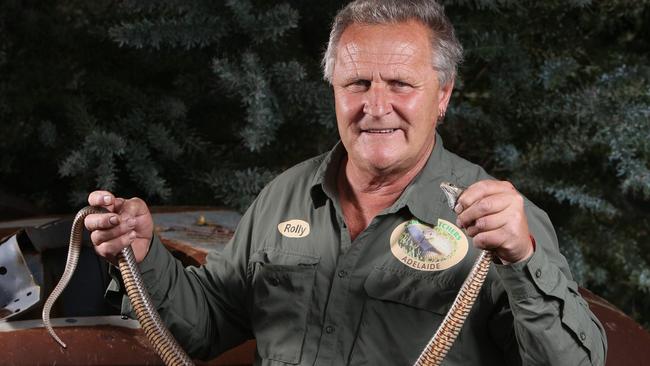
Coiled up with fear: My day of reptilian dismay
By Eva Blandis
Sitting next to a container full of snakes isn’t something I thought I’d ever do.
As I talk to Rolly Burrell of Snake Catchers Adelaide I can’t help but think: “What if one slithers in my bag?”
The Advertiser spent a day shadowing one of the most experienced operators in the business.
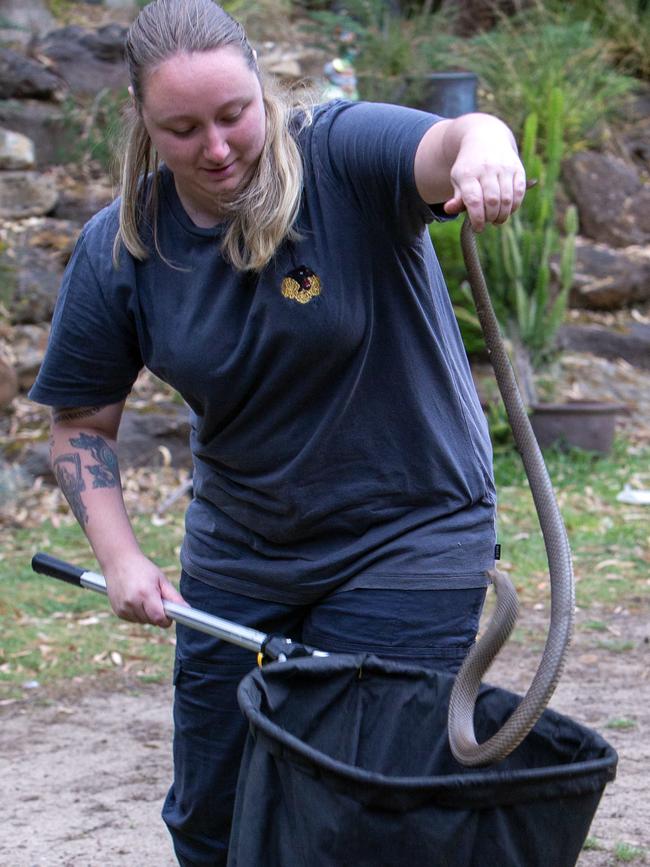
Running a training session, he grabs bags of snakes and takes them outside while I wait with bated breath.
Within seconds a snake slithers from a bag and onto the lawn.
Trainee Amy Gowan, 25, who has 20 snakes at home, grabs it almost immediately. I’m blown away by how calm she is.
Mr Burrell says it takes a special kind to do the “pretty full-on” job.
Being a cool and cloudy morning, calls don’t start coming in until around 10am – the first being from a woman who’s spotted a snake in her front garden.
Soon there’s a steady stream of phone pleas for help.
“We can have anything up to 120 calls,” he says. “Me and (partner) Ange (Broadstock) are smashed.”
Ms Broadstock says they sometimes do up to eight jobs a day, with others allocated to their 20 subcontractors.
“It’s a hard gig. Sometimes we snap at each other because we’re under so much pressure,” she says.
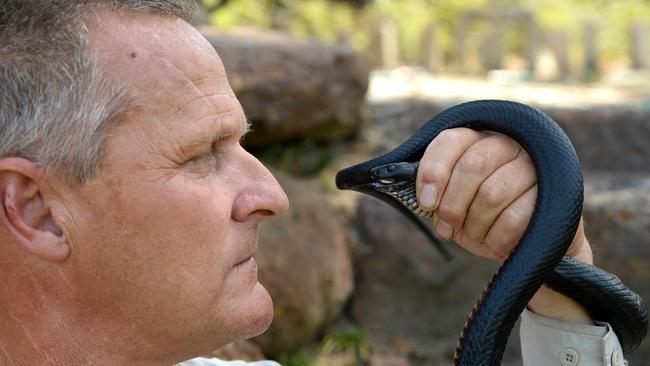
Mr Burrell takes calls and allocates jobs while we make our way to the next person who’s petrified of the snake in their garden or house.
To my relief we only attend jobs where traps need to be set, rather than live catches.
Mr Burrell says he sometimes takes calls from people refusing to pay the $165 call-out fee.
“You put your life on the line (in this job) and when you tell them that you’re going to charge them to come out, they get really upset about it.”
Mr Burrell makes his livelihood from snakes, but he has a love for all animals.
We arrive back at his three acre property, known as Gunda Sanctuary, which is filled with a variety of native wildlife.
“We’ve got a unique country. Our wildlife is so precious,” he says.




